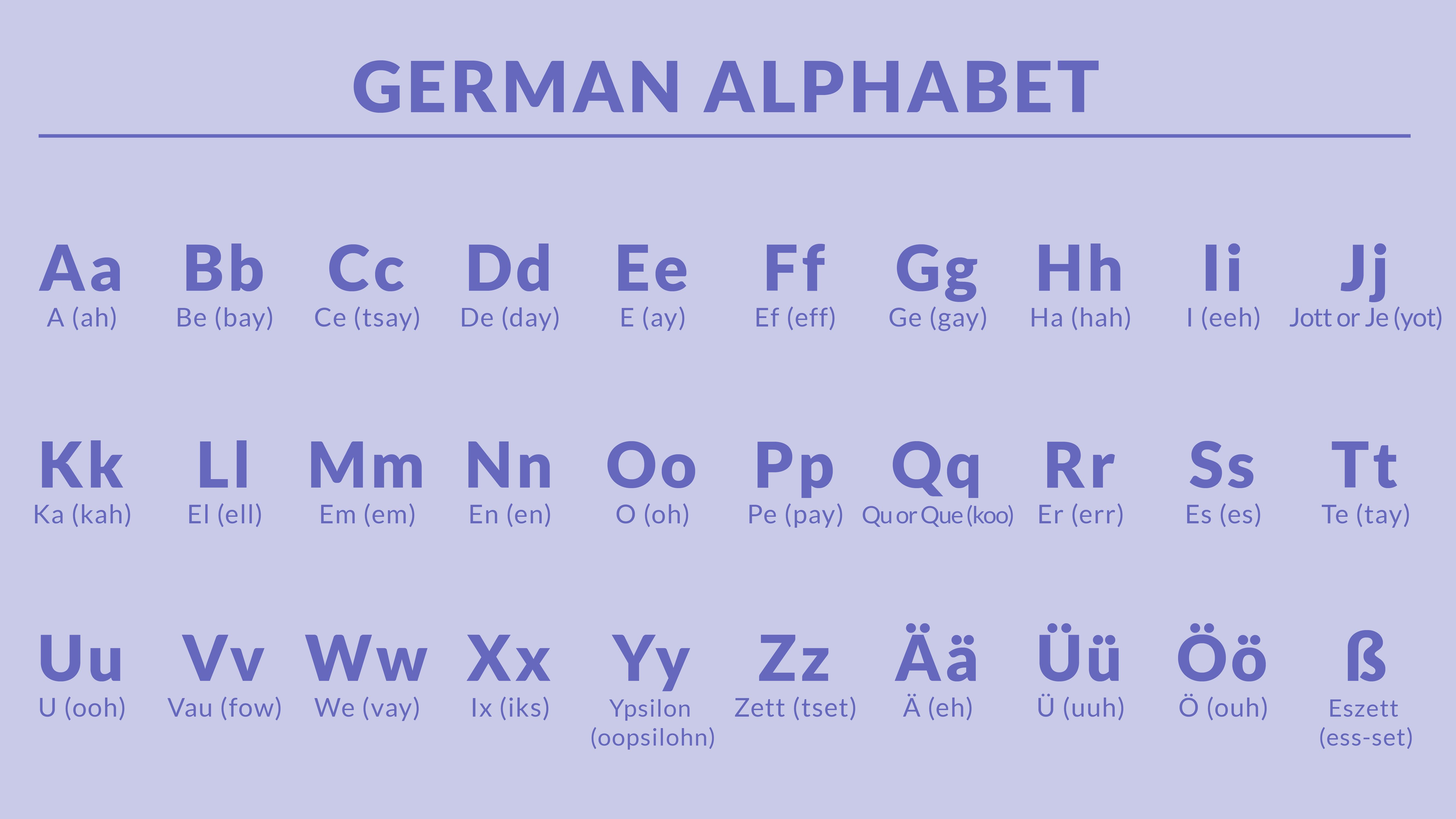
Most people know German food as being heavy, meat-laden dishes that are often quite filling. But what a lot of people don't know is that German cuisine is one of the most underrated in the world. While it doesn't have the widespread appeal of Italian or French cuisine, Germans know how to cook up some delicious dishes that will make your taste buds happy.
From hearty meat dishes to sweet and sour desserts, there's something for everyone to love in German cuisine. So, if you're looking for a new culinary experience, be sure to continue reading – you won't be disappointed!
Learn German with Langster
Introduction to German Cuisine
German cuisine is a reflection of the country's history and culture. For centuries, the Germans have been known for their hearty, meat-laden dishes. However, there is much more to German cuisine than just sausage and pork.
German foods are based on simple, fresh ingredients that are cooked to perfection. There is a focus on regional dishes, so you can expect to find a variety of delicious flavors throughout the country.
From simple peasant fare to elaborate haute cuisine, German cuisine has something to offer everyone. Whether you're looking for a quick, comforting meal or a luxurious feast, here are some of the most popular German dishes that are sure to satisfy your taste buds:
Main Dishes
Sauerbraten
This is a traditional German pot roast made by braising marinated beef, which results in a sweet and sour dish with tender and flavorful meat. Traditionally, it was made with horse meat, but today, it’s more common to use beef or venison.
The beef is usually marinated for a few days in a sour mixture containing vinegar, water, onions, carrots, bay leaves, cloves, and peppercorns. Then, it is seared and braised in a sweet sauce based on water or stock with added sweeteners such as raisins, sugar beet syrup, apple sauce, or even special gingerbread cakes.
Sauerbraten is traditionally served with mashed potatoes or dumplings on the side, along with some red cabbage for added flavor.

Rinderrouladen
Rinderrouladen (or beef roulades) are thinly sliced pieces of beef that are rolled around a filling and served in gravy. The beef is usually tenderized, seasoned with salt and pepper, filled with bacon or other ingredients such as pickles, mustard, onions, carrots, and parsley, then wrapped up like a little package and cooked in butter or oil.
Rinderrouladen are usually served with a side of sautéed red cabbage or sauerkraut, as well as some potatoes, dumplings, or spätzle (which we’ll cover below).
Schnitzel
Schnitzel is probably one of the most popular German dishes around – and for a good reason! This dish consists of thin pieces of meat, usually pork or veal, which are pounded out very thin with a meat mallet. The schnitzel is coated in flour, egg, and breadcrumbs (sometimes seasoned) and then fried in oil or butter.
There are many different variations of this classic dish. Some people add various herbs or spices to the coating mixture; others make it with chicken rather than pork or veal. Regardless of how you like your schnitzel prepared, it’s guaranteed to be delicious!
Eisbein
This is a dish that originated in Northern Germany but has become popular throughout the country. Eisbein refers to pork hocks that are cured, then boiled, and served with sauerkraut. The skin on the Eisbein is crispy and delicious, providing a nice contrast to the soft meat beneath it.
The most traditional way of preparing this dish is by boiling the meat for several hours until it falls off the bone – but you can also roast it in an oven if you prefer a crispier outside. Either way, Eisbein makes a hearty dinner that’s perfect for cold winter nights!
Königsberger Klopse
This is a dish that originated in Königsberger (now Kaliningrad in Russia), but it has become popular throughout the country.
Königsberger Klopse refers to veal meatballs mixed with breadcrumbs, egg, onions, and anchovies. After preparing the meatballs, you put them in salted water, simmer to produce a broth, then add cream, egg yolk, roux, lemon juice, and a generous amount of capers.
This salty, creamy dish is perfectly balanced and can make any meat lover's mouth water just from looking at it.

Bratwurst
A good Bratwurst is a true German delicacy. Though it’s served in all sorts of ways, the most traditional way to prepare it is by grilling or frying pork sausage and serving it with some mustard, bread, and sauerkraut on the side.
Bratwurst is one of the most popular traditional German foods, and you can find it everywhere in Germany, whether at street markets, soccer matches, or fine restaurants. And, of course, no grill party can happen without it.
Currywurst
Currywurst is another popular German dish that almost everyone in the country loves. This savory dish consists of grilled sausage chopped into smaller pieces, topped with a delicious curry ketchup, and served with a side of fries.
Of course, it's the main dish you can find at street markets in Germany. And, Germans love their currywurst so much that they even have an annual festival dedicated to celebrating its glory! So, if you’re craving some good old-fashioned German cuisine (and who isn't?), make sure to give it a try next time you're visiting this country.
Sides
Kartoffelsalat
The Germans are crazy about potatoes, and no meal is complete without a large helping of Kartoffelsalat – or potato salad. This dish consists simply of boiled potatoes mixed with oil, apple cider vinegar, onions, parsley, salt, and pepper. In northern Germany, it’s common to add mayonnaise to the dressing to get a smooth texture.
Some might love it, some might hate it, but no one can argue that German potato salad isn’t quite distinct from other similar dishes around the world. The Germans love their potato salad and serve it as a side dish with almost everything.
Kartoffelpuffer
Kartoffelpuffer is a delicious potato fritter that you can find served as a side dish with your main meal. Many people enjoy them on their own.
To make this tasty dish, you have to grate the potatoes, wrap them in cheesecloth, and squeeze out all of the moisture. Once that’s done, you mix together the grated potatoes with flour, eggs, salt, and pepper – plus some other spices or herbs if you prefer it flavored. Then, just scoop spoonfuls of the mixture in hot oil, and fry until golden brown on both sides.
Traditionally, these crispy potato pancakes are served with sour cream or apple sauce for a satisfying treat any time of day.
Spätzle
Spätzle is a soft, noodle-like dish that you can find served with many different main courses in Germany. It’s so popular that some people even eat it as a meal on its own, especially during the cold winter months or when someone is sick and needs a little comfort food.
Spätzle are made out of egg-based batter that is traditionally scraped directly into boiling water. When they are cooked, you place them in icy water to cool, and then serve with various condiments.
They can be mixed with fresh cherries and grated apples, dressed with a sugary cinnamon glaze, or covered in cheese (for the “Käsespätzle” version popular in Southern Germany). This is the dish loved by many German kids, one that reminds everyone of childhood and summer.
Knödel
Knödel refers to soft potato dumplings that are popular in most of central and eastern Europe. Many people in Germany enjoy these delicious bites with meat stews, like goulash or sauerbraten – but they are also known as “Kartoffelknödel” because they’re traditionally made with potatoes mixed into the batter.
They are often served as a side dish with many meats and sauces or just by themselves in a traditional clear broth.

Pretzel
Who doesn’t love a good pretzel? In Germany, they are so popular that you can find them sold at street markets and pretty much any bakery or café.
Pretzels in Germany are usually large, soft, and salty – though some people prefer their pretzels to be crunchy and small. They can also be shaped into interesting forms like hearts or even animals such as elephants or bears!
Germans enjoy eating their pretzels warmed up with butter, but if you're watching your waistline, there is another option: kettle-cooked pretzels that have been baked with no sugar added.
Sauerkraut
Sauerkraut is a traditional German dish that most people either love or hate. It’s finely-shredded fermented cabbage that is commonly served alongside meat, and many Germans regard it as an important part of their national cuisine.
Traditionally, sauerkraut is made from white cabbage that has been shredded and then marinated in salt water for several weeks to ferment, resulting in the sour taste we know today. If eaten fresh, sauerkraut can have a very strong flavor – but over time the kraut loses its tartness, which makes it more palatable to newbies!
Desserts
Apfelstrudel
This is a delicious German dessert that has been around for centuries. It is typically made with thin layers of dough that are wrapped around an apple filling and baked until crispy.
The best apfelstrudel is served warm, slathered in vanilla sauce or whipped cream – but it can also be enjoyed on its own as a healthy yet tasty treat during the winter months or when you’re feeling under the weather.
Schwarzwälder Kirsch Torte
This is a well-known German chocolate cake that has been around for well over 100 years. It gets its name from the “Schwarzwald” region in southwestern Germany, where this tasty dessert originated.
This rich chocolate cake consists of several layers of chocolate sponge cake and whipped cream with cherries on top, all balanced on a bittersweet layer of cherry liqueur and more whipped cream. If you haven’t tried it yet, then now is the time to make your way over to Germany for a slice – or two!
Spaghettieis
Spaghettieis is an unusual frozen dessert that has been steadily gaining popularity in Germany over the past few years. This tasty treat is made from vanilla ice cream that’s pressed through a potato ricer and served with strawberry or cherry toppings. Visually, it resembles a bowl of spaghetti with tomato sauce, hence the name.
If you’re feeling adventurous and want to try something unique, be sure to give spaghettieis a taste – whether while visiting Germany or even at home, prepared by yourself.
Drinks
German Beer
German beer is world-renowned for its rich, full flavor and high quality. With a long history of brewing that dates back centuries, German breweries are known for using only the finest ingredients to create their beers.
Germany has over 1,200 varieties of delicious beer like pale lagers, wheat beers, or bocks – each with their own unique taste and texture. If you’re visiting Germany anytime soon, then be sure to indulge in some local brews while enjoying the gorgeous scenery!

Gluhwein
Gluhwein is a traditional German hot drink that’s perfect for cold winter days. This warm, mulled wine is made with red table wine and various spices like cinnamon and vanilla, resulting in a lovely aromatic brew.
Gluhwein can be enjoyed on its own or as an accompaniment to a variety of German dishes served at Christmas markets. So, if you’re looking for something to keep you warm this winter, be sure to try out some gluhwein – the locals will certainly approve.
Apfelschorle
Apfelschorle is a common German drink that’s made from mixing apple juice with sparkling water. The resulting drink is light and refreshing, perfect for enjoying on hot summer days or when you need a pick-me-up after a long day of work.
If you’re looking for something new to try out next time you visit Germany, be sure to check out apfelschorle – it’s the perfect beverage to quench your thirst during hot days.
Bottom Line
While the dishes we’ve mentioned are certainly some of the most popular and well-known German foods, there’s much more to explore when it comes to cuisine in this fascinating country. From hearty meat dishes to sweet and sour desserts, Germans know how to cook up some delicious dishes that will make your taste buds happy.
Be sure to try out some of these amazing recipes for yourself on your next trip to Germany – or even at home, if you’re feeling adventurous!









